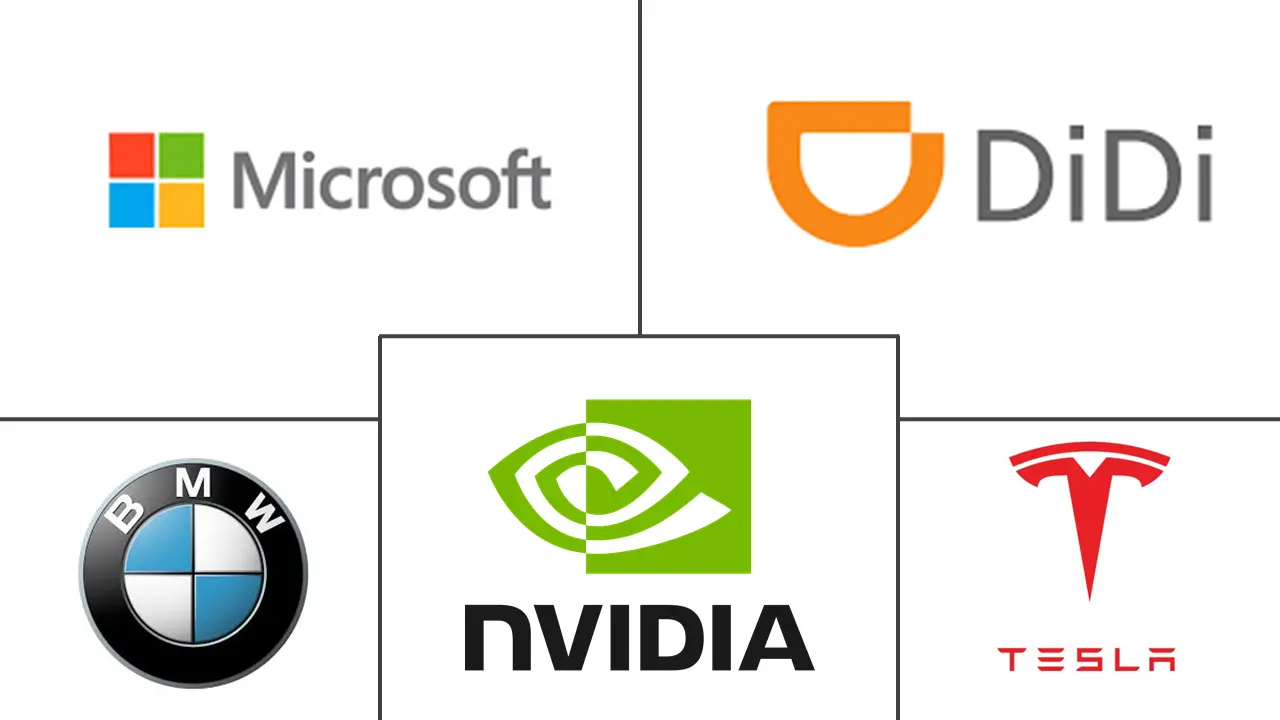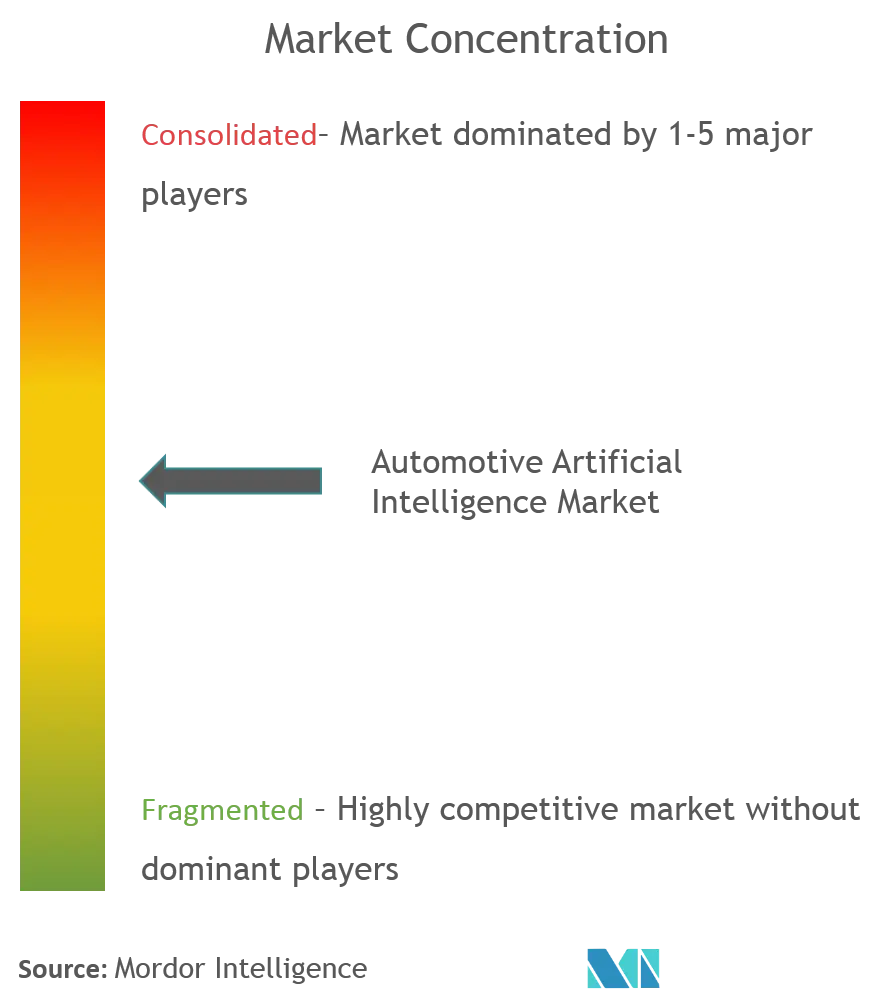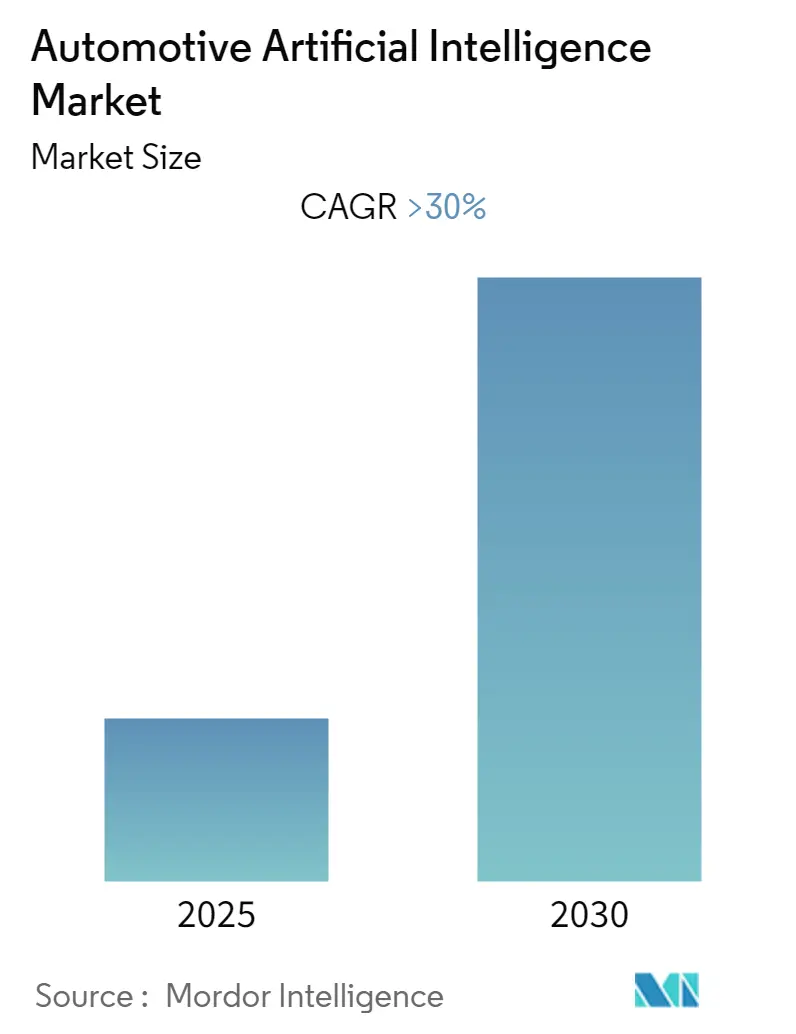
Automotive Artificial Intelligence Market Analysis
The Automotive Artificial Intelligence Market is expected to register a CAGR of greater than 30% during the forecast period.
- The increase in global demand for autonomous driving is driving the automotive artificial market. By 2030, nearly 12% to 17% of total vehicle sales will comprise of autonomous vehicles. Stringent rules and regulations regarding safe driving is making OEMs across the globe to make huge investments in Advanced driver assistance system (ADAS), computer vision and connected car systems.
- The disposable income of customers in emerging economies such as China and India is increasing and they are opting for luxury segments that comes installed with advanced driver assistance and autonomous systems such as automatic parking, automatic emergency braking, etc.
- Artificial Intelligence (AI) is driving the latest trends in automotive industry viz. ridesharing and electrification. For instance, in shared mobility, AI helps in fleet management, pricing to match demand and supply. Many big technology companies such as Intel Corporation, Nvidia are now entering the mobility space.
- Asia Pacific is the biggest market for automotive artificial intelligence. In China, the number of OEMs deploying AI in China went up by 4 percentage points from 5% to 9% during 2017-2018. This growth is fueled by open source platform for AI technology by major technology companies. For instance, Internet giant Baidu developed an open source platform, Apollo, that saw partnership from well over 130 companies.
Automotive Artificial Intelligence Market Trends
Autonomous Vehicles is fueling the growth of Automotive Artificial Intelligence market
The autonomous vehicles are differentiated on the basis of the level of their autonomy. Level 5 represents the fully autonomous vehicles that require no human intervention for safe operation. Currently, majority of autonomous vehicles on the roads such as Cadillac CT6 and Audi A8 belong to level 2 and level 3 category and they are able to perform at least two functions simultaneously but require a human driver for safe operation. Autonomous vehicles use a large number of various components. For instance, Google’s self-driving prototype vehicles use radar, lasers, sonar and cameras. Uber’s prototypes make use of nearly 64 laser beams and an array of sensors. These sensors collect data from the environment and sends it to the software which processes the input and sends processed signals to the actuators which control the functions such as braking and acceleration.
Through Predictive Analytics, autonomous vehicles can predict the movements of objects in the vicinity of the vehicle. For example, Waymo can anticipate beforehand about the movement of pedestrians on the streets and vehicle movements on various lanes. Shared mobility companies such as DiDi Chuxing is using predictive analytics to anticipate the type of transportation required and the desired quantity and dispatches suitable vehicles according to the need.
Model 3, X and S of Tesla now come equipped with autonomous driving and autopilot that receives signals from AI program that processes sensory data. Tesla’s autopilot can even check the meeting schedule of the driver and will drive him/her to the venue.
Countries such as Japan are facing the problem of an aging population and AI powered autonomous cars can be a great medium of transport for elderly and specially challenged people. Artificial intelligence can pick up data from social media, daily habits of driver and can suggest shops and other important activities based on that. It will pick up low fuel indication and will suggest the nearest gas or charging station.
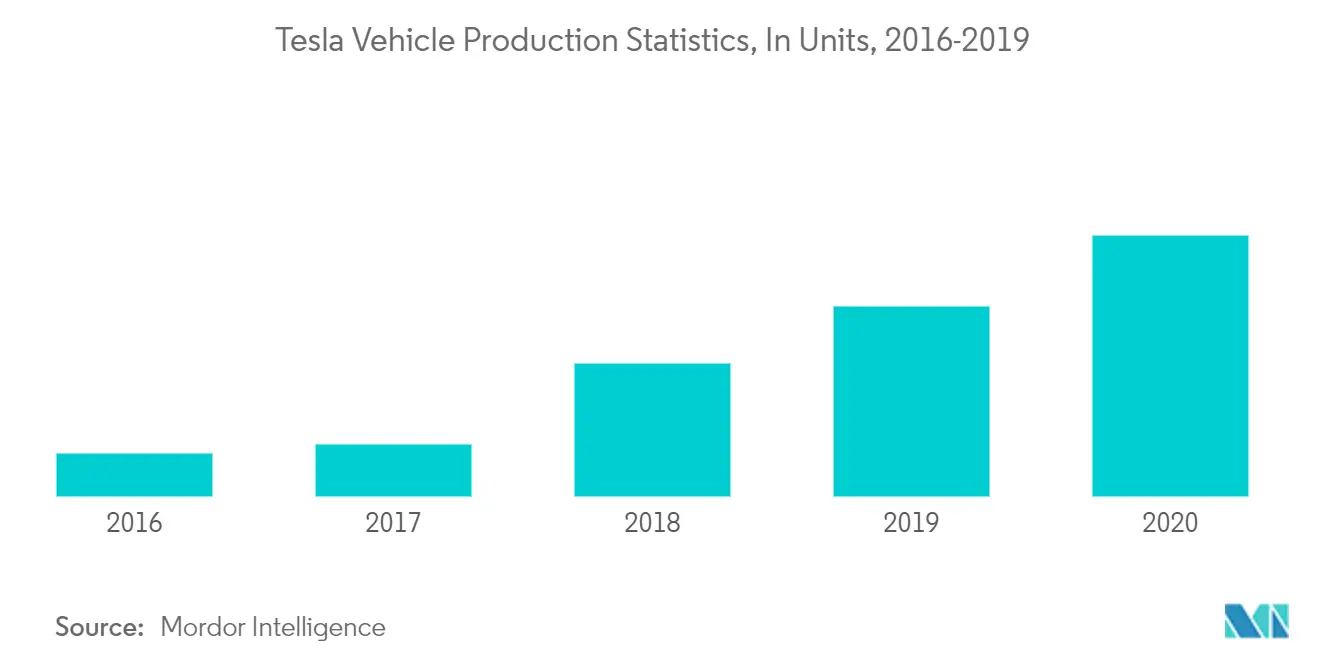
China is the fastest growing market
China is the largest producer of vehicles in the world and is rapidly including Artificial intelligence in its automotive sector. The number of OEMs deploying AI more than doubled from 5% to 9% in one year during 2017-2018. In 2014, 8 startups associated with autonomous driving received funding. The following year, the number of startups that received funding grew by nearly 288% to 31. Startups such as TuSimple, Horizon Robotics and WeRide received Series D (USD 200 million), Series B (USD 600 million) and Series A+(more than USD 10 million) funding respectively in 2019. Large Chinese tech companies such as Baidu, Tencent and Alibaba are entering into autonomous mobility space by partnering with various OEMs. Alibaba joined hands with SAIC motors to produce connected cars. Baidu has partnered with over 90 firms such as Daimler to provide autonomous mobility support with its self-driving support platform Apollo.
Under “Made in China 2025 strategy”, China plans to master key technologies of intelligent driving and create an ecosystem for research and development, production and usage of smart connected cars to transform its automotive industry by 2025.
One of the largest shared mobility platforms in the world, DiDi Chuxing caters to the need of more than 550 million passengers and completes nearly 10 billion trips a year. DiDi uses extensive use of AI to predict the most suitable mode of transportation, and even destination for the customers. DiDi’s “R-U-Going” feature uses optimized model based on repeated normal distribution to read regularity and predicts the destination with 90% accuracy. DiDi brain is an AI platform that is able to read urban transportation patterns, vehicle and road conditions and performs intelligent dispatch of vehicle to meet the demand.
China’s AI startup DeepBlue’s smart panda autonomous bus is operating in 10 cities and company plans to expand its services in 10 more. Company has made global presence by signing a trial agreement in Greece and a USD 10 million deal to supply buses to Bangkok.
Owing to the mentioned reasons, China is expected to lead the autonomous mobility and automotive artificial intelligence market.
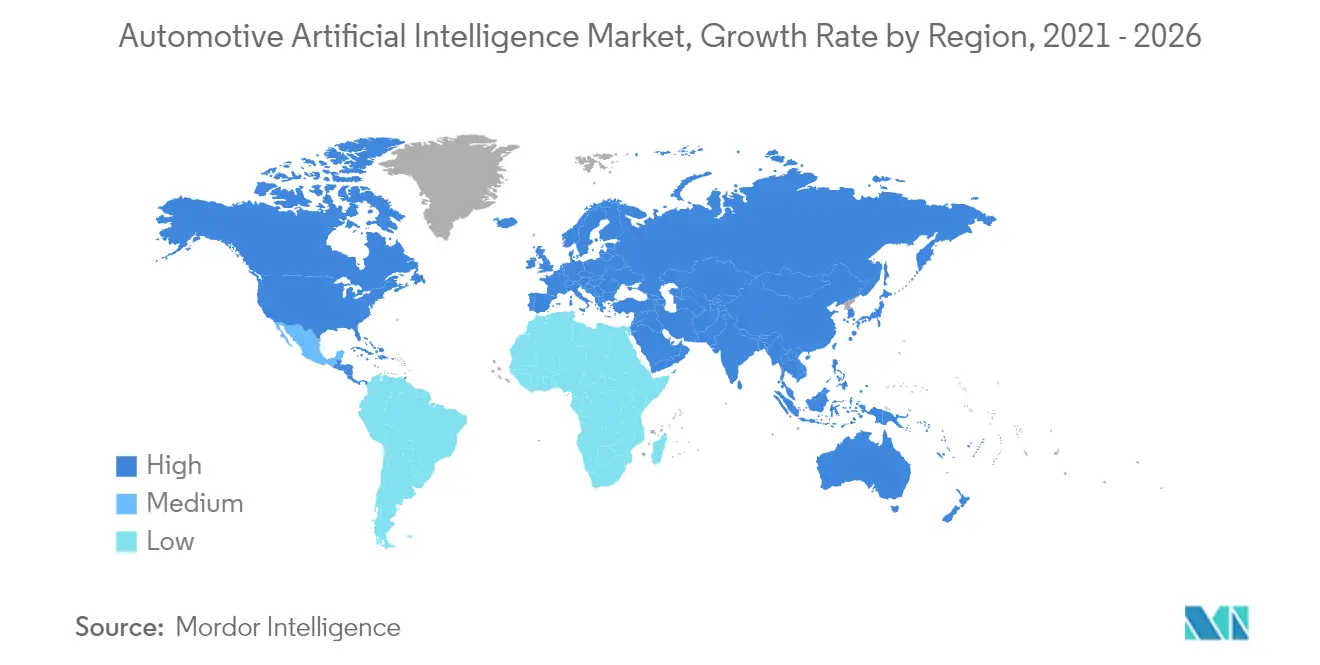
Automotive Artificial Intelligence Industry Overview
Some of the key players in the market are Waymo, Tesla, Nvidia, BMW AG, Intel Corporation, etc.
- Nvidia has developed and AI Platform called DGX-1 that speeds up the deep learning process and creates and advanced AI infrastructure.
- California based startup Autox is using AI technology to deliver groceries to the customers.
Automotive Artificial Intelligence Market Leaders
-
Waymo LLC (Alphabet Inc.)
-
Microsoft Corporation
-
Intel Corporation
-
DiDi Chuxing Technology Co.
-
BMW AG
- *Disclaimer: Major Players sorted in no particular order
Automotive Artificial Intelligence Market News
- In May 2021, Didi Chuxing, announced a strategic partnership with Volvo Cars on autonomous vehicles for DiDi's self-driving test fleet. Volvo Cars' autonomous drive-ready XC90 cars will be the first to integrate DiDi Gemini, a new self-driving hardware platform, which is equipped with NVIDIA DRIVE AGX Pegasus. These vehicles, equipped with DiDi's Gemini self-driving hardware platform, will eventually be deployed in robotaxi services.
- In March 2021, BMW unveiled its next-generation infotainment system, iDrive 8, designed to act as a digital, intelligent and proactive partner for drivers. The system powered by machine learning, natural language processing, AI cloud, and 5G will make its debut with the upcoming BMW iX and i4.
- In February 2021, VolksWagen and Microsoft partnered to develop self-driving car software. VW's new software division will build a cloud-based platform with Microsoft that will help simplify development processes and allow faster integration into its vehicle fleet and make it much easier to deploy software updates to add new features to cars.
- In June 2020, Mercedes-Benz and NVIDIA entered into a cooperation to create a revolutionary in-vehicle computing system and AI computing infrastructure. Starting in 2024, this will be rolled out across the fleet of next-generation Mercedes-Benz vehicles, enabling them with upgradable automated driving functions.
- In March 2020, Waymo announced that it is leveraging AI to generate camera images for simulation by using sensor data collected by its self-driving vehicles. Drawing on feeds from real-world lidar sensors and cameras, the AI creates and preserves rich information about the 3D geometry, semantics, and appearance of all objects within the scene.
Automotive Artificial Intelligence Industry Segmentation
The automotive artificial intelligence market covers the latest trends and technological development in the automotive artificial intelligence, demand of the vehicle type, offering type, level of autonomy, technology, geography, and market share of major automotive artificial intelligence providers across the world.
The automotive artificial intelligence market is segmented by Vehicle Type, Offering Type, Level Of Autonomy, Technology, And Geography.
By Vehicle Type, the market is segmented as Passenger Cars and Commercial Vehicles.
By Offering Type, the market is segmented as Hardware and Software.
By Level of Autonomy, the market is segmented as Semi-Autonomous and Fully Autonomous.
By Technology, the market is segmented as Machine Learning, Deep Learning, Natural Language Processing, And Computer Vision.
and By Geography, the market is segmented as North America, Europe, Asia-Pacific, South America and Midle East and Africa.
| Geography | North America | United States | |
| Canada | |||
| Rest of North America | |||
| Europe | Germany | ||
| United Kingdom | |||
| France | |||
| Russia | |||
| Spain | |||
| Rest of Europe | |||
| Asia Pacific | China | ||
| Japan | |||
| India | |||
| South Korea | |||
| Rest of Asia-Pacific | |||
| South America | Brazil | ||
| Argentina | |||
| Rest of South America | |||
| Middle East and Africa | United Arab Emirates | ||
| Saudi Arabia | |||
| Rest of Middle East and Africa | |||
Automotive Artificial Intelligence Market Research FAQs
What is the current Automotive Artificial Intelligence Market size?
The Automotive Artificial Intelligence Market is projected to register a CAGR of greater than 30% during the forecast period (2025-2030)
Who are the key players in Automotive Artificial Intelligence Market?
Waymo LLC (Alphabet Inc.), Microsoft Corporation, Intel Corporation, DiDi Chuxing Technology Co. and BMW AG are the major companies operating in the Automotive Artificial Intelligence Market.
Which is the fastest growing region in Automotive Artificial Intelligence Market?
Asia-Pacific is estimated to grow at the highest CAGR over the forecast period (2025-2030).
Which region has the biggest share in Automotive Artificial Intelligence Market?
In 2025, the North America accounts for the largest market share in Automotive Artificial Intelligence Market.
What years does this Automotive Artificial Intelligence Market cover?
The report covers the Automotive Artificial Intelligence Market historical market size for years: 2019, 2020, 2021, 2022, 2023 and 2024. The report also forecasts the Automotive Artificial Intelligence Market size for years: 2025, 2026, 2027, 2028, 2029 and 2030.
Our Best Selling Reports
Automotive AI Industry Report
Statistics for the 2025 Automotive Artificial Intelligence market share, size and revenue growth rate, created by Mordor Intelligence™ Industry Reports. Automotive Artificial Intelligence analysis includes a market forecast outlook for 2025 to 2030 and historical overview. Get a sample of this industry analysis as a free report PDF download.

